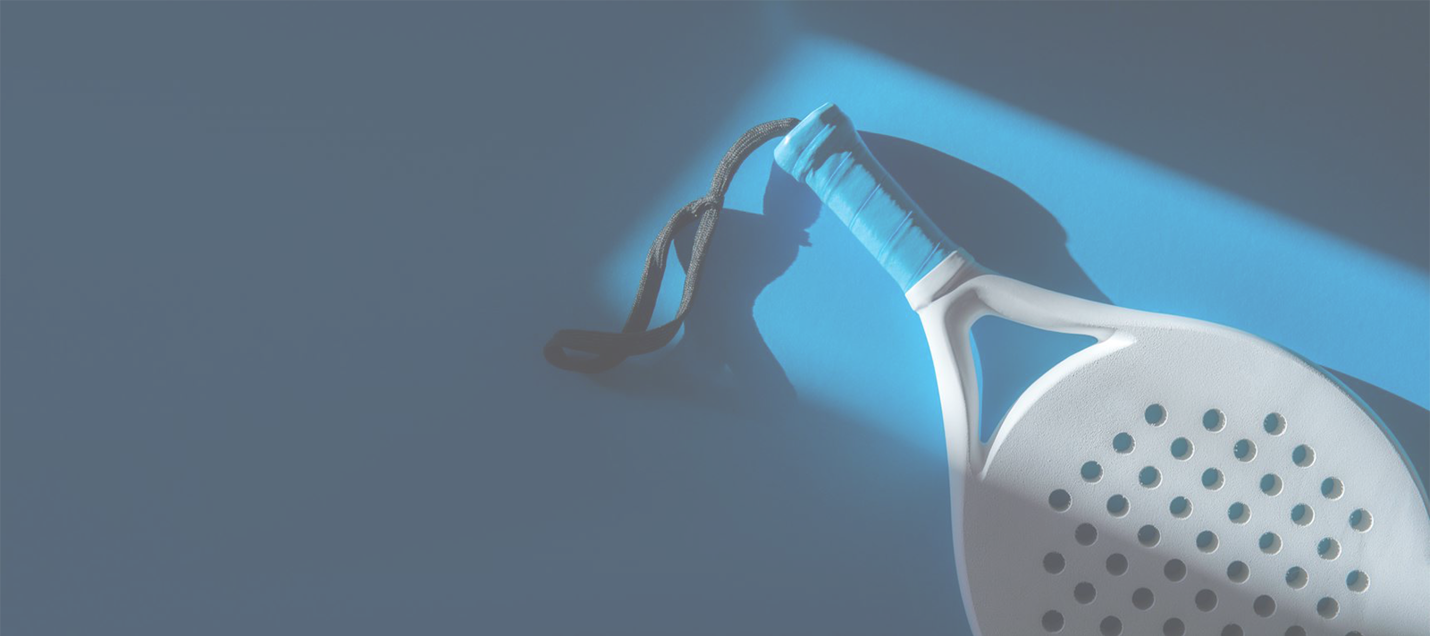
Sports Facilities
A wide range of sports has typically been played, exercised and enjoyed outside. Some sports are born as a result of people rather engaging in physical activity indoors, futsal is one example. Today non-traditional indoor sports are moving inside, often to escape extreme weather or dangerous levels of pollution.
However, numerous of studies show that the indoor environment in sports facilities can be just as dangerous and disadvantageous as the outdoor climate. The requirements of the indoor climate are far too often deficient and unconvincingly accepted. Good air quality, low levels of indoor pollutants and top performance has a positive relation to each other and is often followed by returning athletes and players. Let us share our knowledge on how to ensure a good indoor climate in sports facilities.
What to think about when designing a good indoor climate in sports facilities
BREATHING ZONE AND FRESH INDOOR AIR
Research show that performance and well-being is dependent on a good indoor climate. Unfortunately this is not often considered in sports facilities. When leading the change, the below aspects are essential to keep in mind.
To achieve an indoor environment encouraging top performance it is important to ensure a sufficient intake of fresh air. Usually three times as much fresh air is needed in comparison to buildings with more moderate activity. It is also vital to make sure that the fresh air trickles all the way down from the typically high ceilings to the breathing zone, to where the athletes are.
Air pollution will be further problematized in this guide, but initially it is enough to know that in sports facilities air pollution can be extremely high. The intake of outdoor air, building materials, physical activity and equipment in the facility is continuously polluting the inside air. It must therefore be extracted. The challenge then is to do so without the upcoming of noise, drought or unnecessary and expensive temperature variations. Design and installation software programs play an important role in getting things right from the beginning.
An indoor padel arena has its own particular challenges
Padel is a racquet sport with a whit of similarity to both tennis and squash. The most obvious differences though are the solid stringless racquet and the enclosed courts almost fully in glass. The latter together with the fact that it is a fast paced game give distinctive preconditions for creating an optimal indoor climate. Let us give you a detailed introduction and various leads on how to design a good indoor environment solution for a padel arena.
Reference case, Gessie Padelcenter in Sweden
READ MORE IN OUR BROCHUREVARYING CONDITIONS AND VARYING INDOOR CLIMATE
Sports facilities are commonly used for much more than physical exercise. They are often designed with spectator stands, cafés, stores, offices or conference rooms. These different sections of a sports arena have separate purposes and activity levels. Hence various conditions for the indoor climate will apply. By dividing the facility into climate zones, products and solutions may be chosen carefully for each zone individually.
Similar to many other building types, the activity and the number of people in sports facilities varies throughout the day, the week and the year. With a glance at the paragraph above, it should be evident that it will be both expensive and environmentally destructive to always run an entire sports arena for its maximum capacity. Both products and systems should be selected to create a demand controlled indoor environment that has the intelligence of adjusting the indoor climate to the exact need, at the right time.
Read more in our blog, Is demand controlled indoor climate a profitable investment?
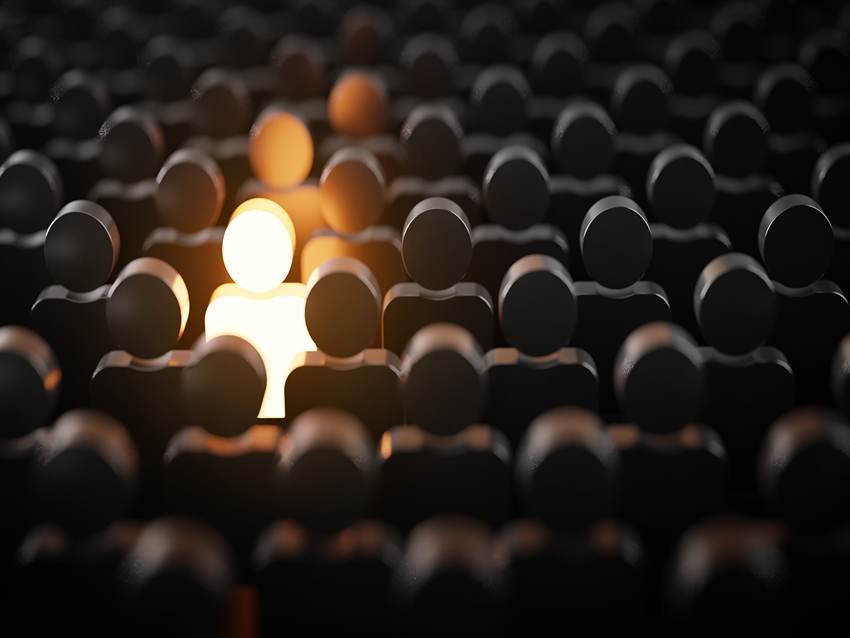
HUMIDITY AND DAY-LIGHT
Last, but not least, the construction of sports facilities are at times less advanced. If the facilities are to be heated or cooled, it becomes vital to make sure measures are taken to prevent precipitation of condensation due to temperature variations. Humidity overall, is an important factor to address in any building project as it has a clear impact on performance, comfort and the construction itself.
Inlet of daylight is sometimes foreseen in the simplicity of the construction of sports facilities. Evidently the positive effects of natural daylight on health and happiness is underestimated. However, more often windows or even floor to ceiling glas walls are fitted into these buildings. In that case, it is important to consider the gain or loss of heat energy when designing an indoor climate solution.
The World Athletics organisation and various researchers put the indoor climate of sports facilities in focus – there is great change to be expected. At Swegon we have long-term knowledge and high quality products for creating healthy and comfortable indoor environments for sports engagement.
Data on healthy and energy efficient sports [facilities] is very sparse and the requirements are sometimes very generalProf. Dr. Philip Leistner, Institute for Acoustics and Building Physics (IABP) at the University of Stuttgart
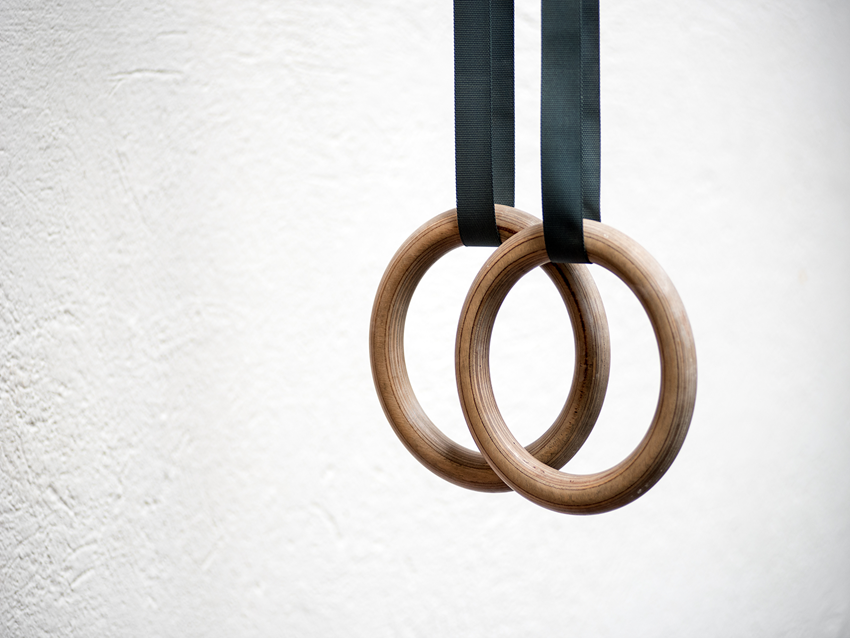
Pollution might be the toughest game in sports facilities
POLLTION IS NEGATIVELY AFFECTING CONCENTRATION
Several studies show that poor air quality has a negative effect on both performance and strategic decision making among athletes. A surge in the concentration of particles in the air can increase the risk of making a false decision by more than 26%. With this in mind, it could very well be argued that moving sports indoors is a way to reach athletes’ full potential.
However, research also show that the level of indoor pollutants is exceptionally high in sports facilities. Some pollutants are related to the building and its construction, but most are associated with training equipment, cleaning products and the outdoor air. Since the World Athletics organisation and scientific researchers put this issue in the spotlight, air quality has finally gotten the attention it deserves. Make sure you understand the complexity of indoor pollutants.
Read more in our blog, What do you get when you measure CO2 vs VOC?
Sources: Campelli, Mathew. Sustainability Report (2020) Air pollution: Tackling sport’s invisible threat (17 Nov 2021) I Salonen, H., Salthammer, T. (2020) Human exposure to air contaminants in sports environments (16 Nov 2021) I RCPCH and Royal College of Physicians (2020) The inside story: health effects of indoor air quality on children and young people
TIME OUT: The indoor climate could be a game-changer
The game of futsal was born in 1930 in Brasil, it was designed to be played indoors and the rules of the game was borrowed from other court sports, such as basketball and handball. Today futsal is played by many millions of people in over 100 countries. It is a fast and skill-based sport played on a small court which gives limited time to make strategic decisions in the heat of a game. Track cycling is another sport born to be exercised indoors. The reason for being indoors was initially to gather the spectators and to be able to charge a fee for attending competitions.
In the example of futsal it becomes evident that the players are in need of a perfect indoor climate to be able to develop their skills further, focus and to not make any mistakes along the game. In terms of track cycling, the importance of a good indoor environmental quality has to do with the comfort and overall experience of the audience. Players or the cheering squad, the indoor climate is a game-changer
POLLUTION MAY DISCOURAGE ACTIVE MOVEMENT
Most studies show that the advantages of physical activity outweigh the risks of being exposed to poor air quality. However, leading athletes are considered to be disproportionally affected by bad air quality due to higher breathing rates during several hours of intensive training. The impact of inadequate air conditions is also greater on children due to their somewhat higher pulmonary ventilation and the relatively many hours they tend to spend in training facilities.
Air pollution put an extra strain on children’s physical activity and may in worst case discourage them to be active. Architects are more often designing indoor environments to appeal to everyday movement but the indoor environmental quality is of vital concern to maintain children’s engagement in healthy and playful movement, sports and athletics. At Swegon, our everyday purpose is to create healthy and comfortable indoor environments for people to be at their best, today and tomorrow. Let us support your next project with our knowledge and experience, produces and services.
Learn more about children and indoor environments
Sources: Campelli, Mathew. The Sustainability Report (2018) To what extent does air quality impact athlete performance? I Cao, G., Grande M.S. (2019) Air quality in sport facilities I Jacobo, A. et al. (2020) Not all indoor spaces are created equal: enhancing indoor air quality to promote physical activity among vulnerable populations
A demand controlled indoor climate
We spend about 90% of our lives indoors, many hours may be spent in indoor training facilities. Knowing that good indoor environmental quality and performance goes hand in hand, a constantly optimal indoor climate should be seen as essential for athletes to reach their full potential. A demand controlled indoor climate system monitor and adjust the indoor climate accordingly to varying levels of activity and occupancy throughout the building, and throughout the day. Learn more about our demand controlled indoor climate system, WISE.
Future sports facilities are designed for varied activity
Research show that performance and well-being in an indoor environment is dependent on a good indoor climate. Athletes in traditional outdoor sports are at times tempted to move their training indoors, often to avoid weather or pollution. Indoors they may continue their efforts and fine tune their routines in a sound environment, but many have also found additional activities or rest that complement or strengthen their core type of sport. This might have been the origination of performance centres, facilities that are being developed for varied physical exercise, recovery, rehabilitation and recreation. The future of performance centres lies in their focus on athletes’ overall achievements and well-being, which we said above is reliant on a good indoor climate.
A good indoor climate is further reliant on a number of factors. Temperature and air quality might be the most obvious aspects but levels of noise and humidity are challenging in training facilities. Coming back to the fact that outdoor sports are moving indoors. The inlet of daylight ought to be inevitable for maximising the chances of top performance, well-being and a continuous return of traditionally outdoor athletes.
Sources: Abraham, Jonalyn. Gensler (2021) Designing performance centers to promote well-being for athletes I Internicola, Dorene. Reuters (2013) Outdoor exercisers can reap unexpected benefits by moving indoors
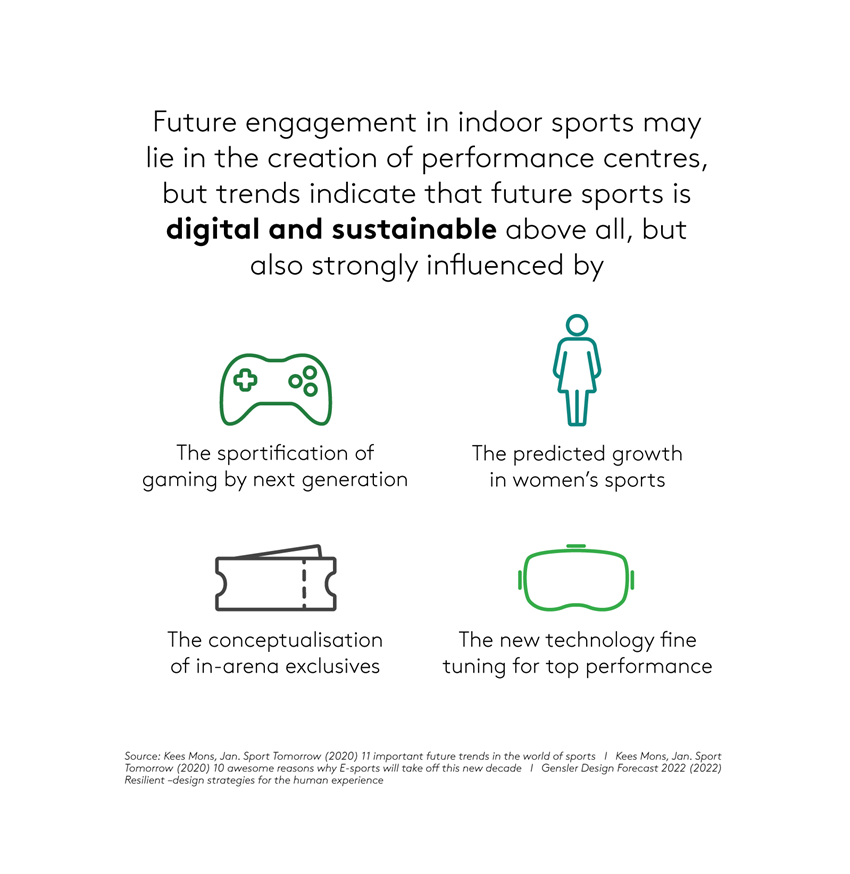
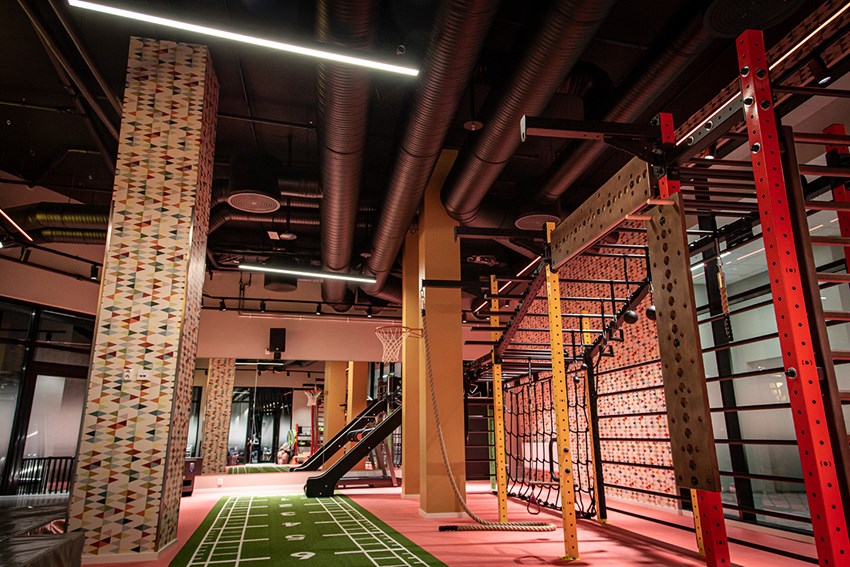
Various sports facilities in our reference section
The requirements for indoor climate in sports facilities has far to often been set very low. This is about to change as the relation between a good indoor environment and top performance has been noted and the regulatory system has been advanced.
The many considerations mentioned at the beginning of this guide might give a sign of complication. But, we at Swegon can assure that ventilating, heating or cooling sports facilities is generally not more complex than doing the same in an office, hotel or industry. Regardless the reason for being indoors we know how to create indoor environments for people to be at their best today and tomorrow.
We have delivered our products and services together with a great amount of profound knowledge to a wide variety of projects. See our references, and especially Vinnhorst Arena in the section of other properties.
TO OUR REFERENCE SECTION